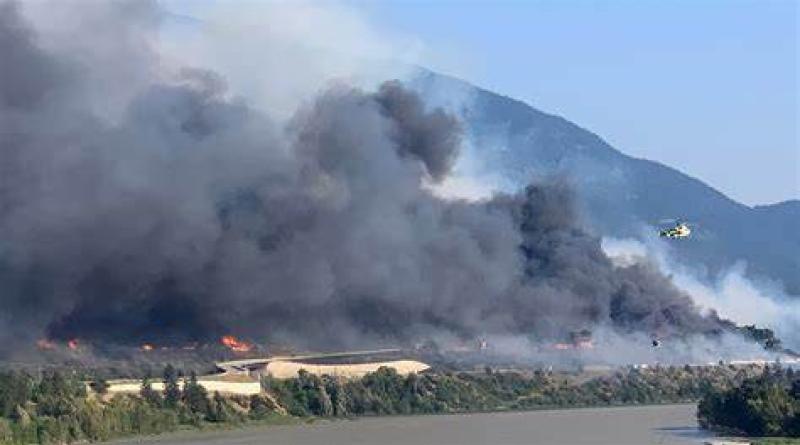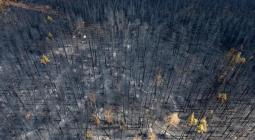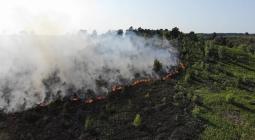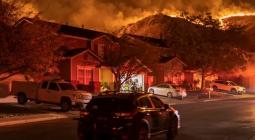Canada’s wildfires are part of our new climate reality, experts and officials say

Canada’s ongoing wildfire season is a harbinger of our climate future, experts and officials say.
The fires are a “really clear sign of climate change”, said Mohammadreza Alizadeh, a researcher at McGill University in Montreal, who is also a postdoctoral associate at the Massachusetts Institute of Technology.
Research shows that climate change has already exacerbated wildfires dramatically. A 2021 study supported by the National Oceanic and Atmospheric Association found that climate change has been the main driver of the increase in hot, dry fire weather in the western US.
By 2090, global wildfires are expected to increase in intensity by up to 57% thanks to climate change, a United Nations report warned last year.
Canada is on track to experience its most severe wildfire season on record, national officials said this week. It’s part of a trend experts say will intensify as climate change makes hotter, drier weather and longer fire seasons more common.
The country has already seen 1,400% of the normal amount of land burned for this time of year. More than 400 blazes were burning across Canada on Wednesday, following an unprecedentedly intense beginning to the fire season. Hot and dry conditions are expected to persist through to the end of the season.
Scientists have not linked this summer’s fires to climate change, but experts and officials say global warming will exacerbate Canadian wildfires in general.
By the end of the century, climate change could double the acreage burned by wildfires each year, according to Canada’s natural resources agency. That could take a heavy toll on human safety, ecosystems and air quality, while threatening timber supply.
Multiple climate-linked factors exacerbated this year’s fires, said Alizadeh. Dry conditions left vegetation parched and created tinderbox-like conditions. The hot air itself made it easier for fires to spark. And more frequent lightning – which strikes more frequently during hot weather – increased chances of blazes igniting in the forest.
Both the intensity and wide distribution of this year’s blazes have stunned officials. Fires are burning in nearly every province and territory in Canada.
“The distribution of fires from coast to coast this year is unusual. At this time of the year, fires usually occur only on one side of the country at a time, most often that being in the west,” Michael Norton, an official with Canada’s Natural Resources ministry, told Reuters.
Daniel Swain, a climate scientist at the Institute of the Environment and Sustainability at the University of California, Los Angeles, said that research shows there has already been a climate change-linked uptick in fire weather in western Canada. “There’s a clear climate connection there,” he said.
In eastern Canada, where fires are also blazing, there hasn’t been as much of demonstrable link to climate change historically, but that may be starting to shift, he said.
The fires have forced tens of thousands of people to evacuate their homes since May, and created smoke that has degraded air quality hundreds of miles away in the United States.
Marshall Burke, associate professor of Earth System Science at Stanford University, said New York City’s smoke event this week is bigger in scale than anything seen in the last two decades.
“Current wildfire smoke event in NYC is off the charts relative to anything in past two decades,” he said. “Last two days are remarkable.”
The Canadian blazes come two years after an unprecedented fire season in the country, when a wildfire destroyed an entire village the day after the nation broke its highest record temperature.
Greenpeace Canada noted with disbelief on Twitter that 7 June marks Canada’s Clean Air Day, while officials said the fires were a warning about climate change.
“The ongoing wildfires remind us that carbon pollution carries a cost on our society, as it accelerates climate change,” Steven Guilbeault, Canada’s minister of environment and climate change, tweeted on Wednesday.
Some US politicians made that link as well.
“Climate change makes wildfires more frequent and widespread. If we do nothing, this is our new reality,” tweeted Senator Bernie Sanders. “It’s time to act.”
Representative Alexandria Ocasio-Cortez echoed the sentiment. “We must adapt our food systems, energy grids, infrastructure, healthcare, etc ASAP to prepare for what’s to come and catch up to what is already here,” she tweeted.
The fires and resulting air quality emergencies come as global officials are gathered at the Bonn Climate Change Conference in Germany to assess progress on climate action and look ahead to the Cop28 United Nations climate talks.
“If US President Biden, Canadian Prime Minister Justin Trudeau, and the UN Climate Conference leaders need a reminder to take bold action on climate, the out of control Canadian wildfires and consequent smoke pollution should be all they need,” Allie Rosenbluth, US Program co-manager at the advocacy group Oil Change International said in an emailed statement.
Unfortunately, the fires in Canada won’t burn out any time soon, said Swain, because many of the fires are scorching through dense boreal forests.
“The volume of burnable organic material is extremely high in these places,” he said.
Right now, unusually strong north-to-south winds mean the the smoke is “making a beeline from these unusually intense and large fires in Canada, directly down to New York”, he said.
As wind patterns shift, Swain said, the US east coast could see a reprieve from smoke-filled skies. But as the fires continue to blaze through the rest of the summer, he said the smoke would probably be back over the region before long.
“This could be an episodic problem in places like New York and New England for weeks or months,” he said. “It won’t be this smoky the whole time. But this is probably not going to completely go away.”
cover photo:nytimes.com





